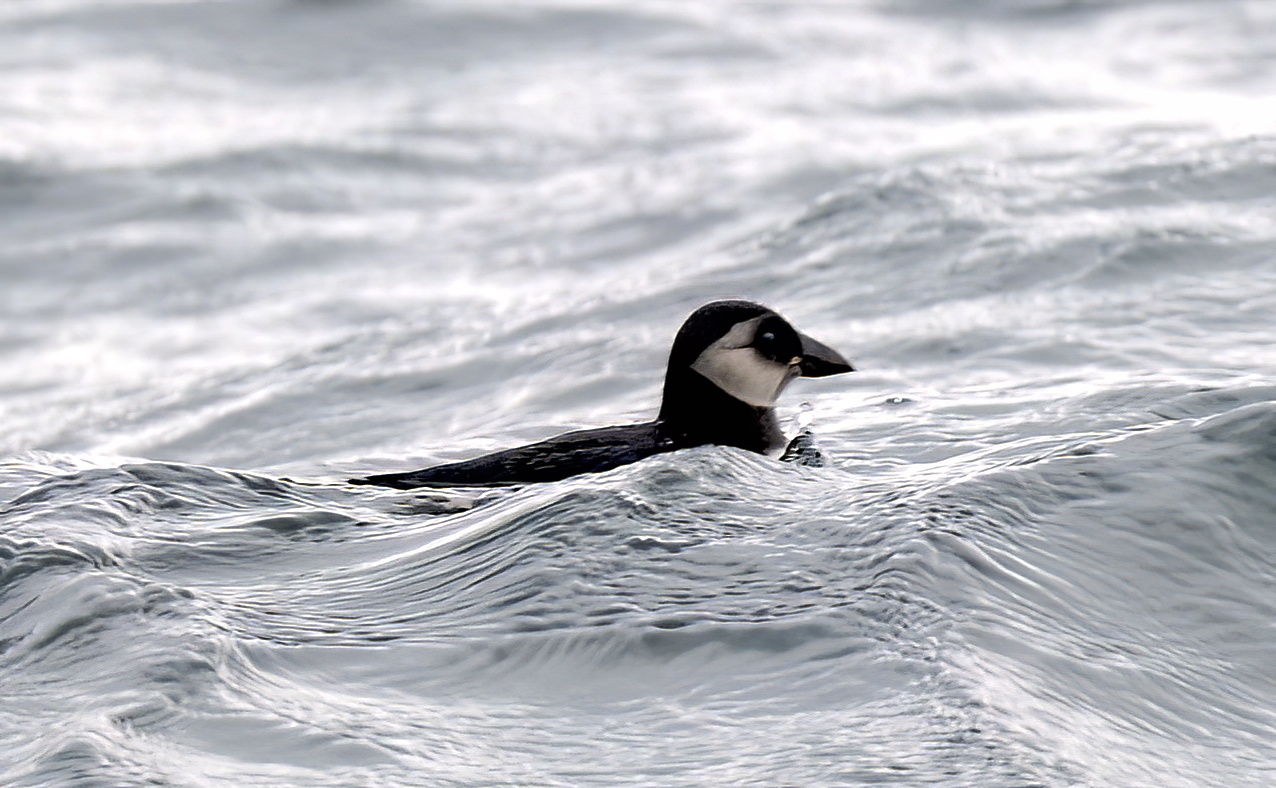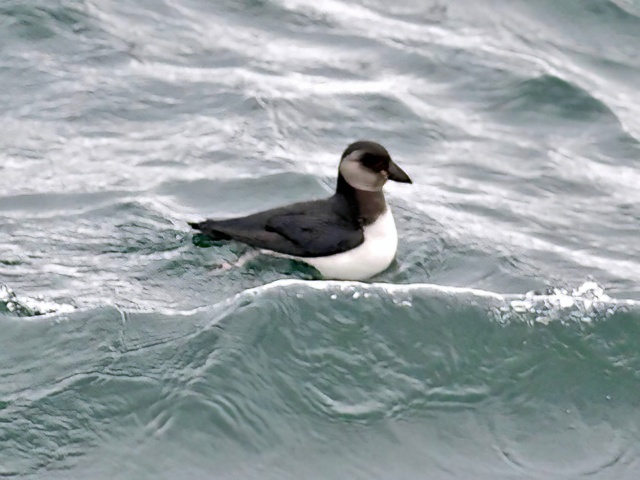Atlantic Puffin Fratercula arctica


The Puffin's rarity in Lincolnshire may partly be because the Flamborough/Bempton colony is small and the Coquet and Farne Island colonies that hold 95% of the English Puffin population are some 200 miles north of the Humber mouth. Up until the 1980s the Atlas described Puffin as fairly common and it became rare off Lincolnshire in the 1990s. Interestingly the English population was thought to be growing at that time though it has declined some 21% since 2000. The big wreck of February 1983 produced 284 dead Puffins along our coast (see 'The Auk wreck, February 1983' on the Razorbill web page). Analysis of LBR reports shows that in the 10 years to 2019 there was an average of around seven accepted records, ranging from one in 2012 to 19 in 2017. Peak passage occurs in September-October and the only month with no records in the 10-year period was December. The largest flocks reported were 10 north at Gibraltar Point on September 18th, 2017, with two at Crook Bank, Saltfleetby-Theddlethorpe NNR the same day. The second largest was eight at Donna Nook on August 11th, 2010, and in 2013 six birds were picked up dead there March 29th-April 1st. Another factor that probably limits their presence off the Lincolnshire coast is their extreme pelagic tendency, demonstrated by geolocator tracking, which sees them many thousands of kilometres away in oceanic waters during the winter, with just a few remaining in the North Sea. As with Razorbills Alca torda several recoveries of Puffins ringed as chicks in the Farne Islands and in the Scottish islands were made in 1983; oddly all of them were adult birds, two of them around 20 years old. There were no recoveries of foreign-ringed birds.
(Account as per new Birds of Lincolnshire (2021), included September 2022)

